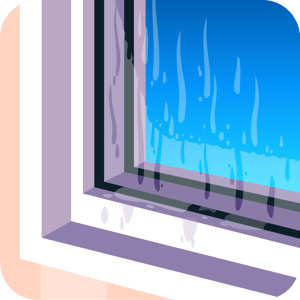How much does your dehumidifier cost to run? It could be adding £18 a month to your energy bill
As the temperature drops, you might have started to notice condensation appearing on the inside of your windows.
But, don’t just reach for your dehumidifier. It could cost you more than you realise!
Wasted energy makes up 30% of the average energy bill - do something about it! Get more from your smart meter with Loop.
Why is condensation a problem?
During the winter, condensation can be a big problem, with many of us finding our windows drenched each morning.

It occurs when excess warm water vapour in the air inside your home comes into contact with cold surfaces, like external walls and windows. If it isn’t dealt with, the excess moisture can lead to other problems such as mould, mildew and musty smells.
Using a dehumidifier can seem like an easy and reliable way to stop the problem. But it can come at a cost.
Dr Steve Buckley, head of data science at Loop says:
“Whilst dehumidifiers can be effective at combating condensation they can be a drain on your energy bills. A 483w dehumidifier costs nearly £18 per month or £216 a year, if used for 4 hours per day.
The good news is there are other ways to reduce condensation that won’t hit your energy bills. It’s generally about improving ventilation and reducing the causes of condensation. Longer term, it’s better to treat the cause than deal with the symptoms.”
Short and long-term solutions
If you’re looking for a short-term solution to reduce your condensation, consider using moisture absorbers like silica gel. These come in different forms - some are single-use, and some are reusable. It’s worth considering though that these come at a cost and that the reusable ones need to be ‘recharged’ - that is, dried out - so unless you can do that somewhere else, you’re just releasing that water back into your property.

For longer-term solutions, consider improving ventilation and glazing. Double or triple-glazed windows with trickle vents are far less likely to suffer from condensation and will help to improve your home’s insulation, making them a worthwhile investment.
Free alternative methods
Taking some free, simple and low-effort measures can help to cut the condensation in your home without the expense of using a dehumidifier. Even if you invest in longer-term solutions, these are good practice energy-saving habits to adopt. They’ll become second nature in no time!
1. Dry clothes outside where possible
If this isn’t an option, dry them in a closed space with a window slightly open. This will avoid moisture from building up elsewhere in your property. The same applies to closing bathroom and kitchen doors whilst in use.
2. Use the extractor fan when you are cooking or showering
If you don’t have an extractor fan, it’s worth considering one. In the kitchen, use lids on your pans whilst cooking to limit how much moisture can escape from the pan.
3. Ensure you have adequate space for air to circulate around furniture
This includes sofas and free-standing wardrobes. Especially when they’re against colder outside walls that are more likely to suffer from internal condensation.
4. Monitor your usage with Loop
If you still opt to use a costly dehumidifier or even other electric devices such as extractor fans to combat condensation, monitor how much energy they use with free energy-saving apps like Loop. Track the energy you’re using and see what it’s costing you, so you can make smart decisions about how you use them.
• • •
Cut your energy bill with Loop
Loop is a FREE energy-saving app that links to your smart meter, analyses your energy use and shows you easy ways to save. On average, Loop users cut their electricity use by 16% and their gas use by 10%! How much could you save?








